
Hieronymus Bosch often chose the lives of the saints as the theme of his paintings. Unlike the traditions of medieval painting, Bosch rarely depicts the miracles they created and the spectacular, spectacular episodes of their martyrdom that delighted the people of that time. The artist glorifies the “quiet” virtues associated with self-absorbed contemplation. Bosch has neither holy warriors, nor gentle maidens who desperately defend their chastity. His heroes are hermits who indulge in pious reflections against the backdrop of landscapes.
In the triptych “Sacred Hermits”, which Bosch wrote in the middle of his creative path, three variations of this theme are depicted. The lives of all three reflect the ascetic ideal and mortification of the flesh, which were sung in the treatise “Imitation of Christ,” constant prayer and pious reflections. Foma Kempisky: “What power of self-denial is the life of the holy fathers who have retired to the monasteries! With what long and painful temptations they had to fight! How often did the devil overcome them!” How hot and much they prayed to the Lord! .. How great and ardent was their zeal to the perfection of their spirits! What courage they showed, leading a battle with their vices! ” Presumably the creation of the triptych Bosch inspired the “Book of the Higher Truth” of the Netherlands mysticist Jan van Ruisbruck, in which the hermits Anthony, Jerome and Egidius embody three degrees of ascension to the highest truth. Triptych “Holy hermits” is in a badly damaged state.
Central part. “Saint Jerome”. In the painting, St. Jerome directs a closer look at the crucifix, finding refuge in him and salvation from the forces of evil that are embodied in the ruins of the pagan temples scattered around, and in the two monsters in the foreground clinging to the deadly battle. The iconography of St. Jerome is quite traditional – a crucifix, a cardinal’s clothing, a desert. But Bosch depicts him not absorbed in meditation by a wise old man, as was customary, but a penitent ascetic. Jerome prays on the ruins of the pagan temple, and around him – many symbols of evil. The left wing. “Saint Anthony”. On the left wing, Saint Anthony opposes the love affair of the devil, who is trying to seduce him.
Saint Anthony is one of the most sacred Bosch saints who spent most of his life in the Egyptian desert. Against the background of a night landscape illuminated on the horizon by the glow of a burning village, St. Anthony resists the temptations of the queen of demons – a naked woman. She is standing in a pond near a dry tree, surrounded by devils in the guises of fish, peacocks and ugly dwarfs. Right wing. “Holy Egidius.” On the right panel, Saint Egidius is depicted, sitting comfortably in a cave that serves as his chapel, prays before the altar. Sticking out of his chest, an arrow is a traditional attribute of the image of this saint who saved his beloved deer, shielding it from the arrows of the hunters with their own breasts.
St. Egidius, a hermit of the 7th century – patron of cripples and beggars. He prays in a cave, his arrow sticks out of his chest. The hunter aimed it at the holy doe lying at the feet, and he covered the doe with his body. Lan is an attribute of a saint. Egidius also became famous for the miracle of forgiveness of sins, in which a person is hard to admit. With the help of Egidius, an angel during a service in the church brings a note with the confession of a sinner, and sin is forgiven.
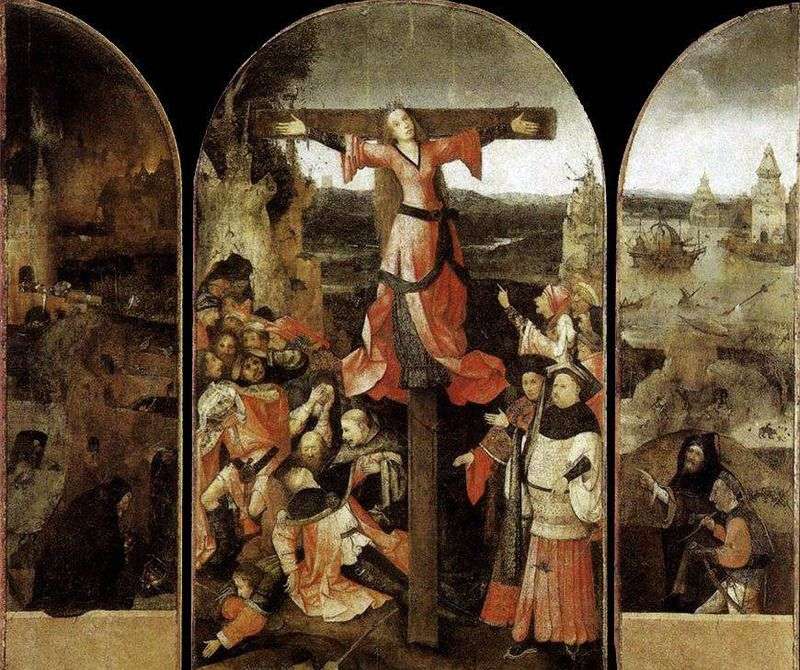 Martyrdom of the Holy Liberty. Triptych by Hieronymus Bosch
Martyrdom of the Holy Liberty. Triptych by Hieronymus Bosch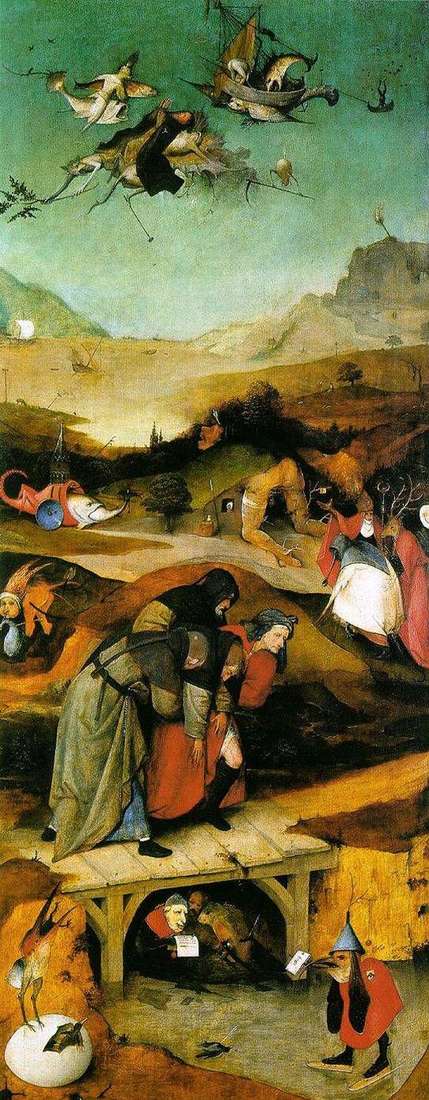 The flight and fall of Saint Anthony. The left wing of the triptych by Hieronymus Bosch
The flight and fall of Saint Anthony. The left wing of the triptych by Hieronymus Bosch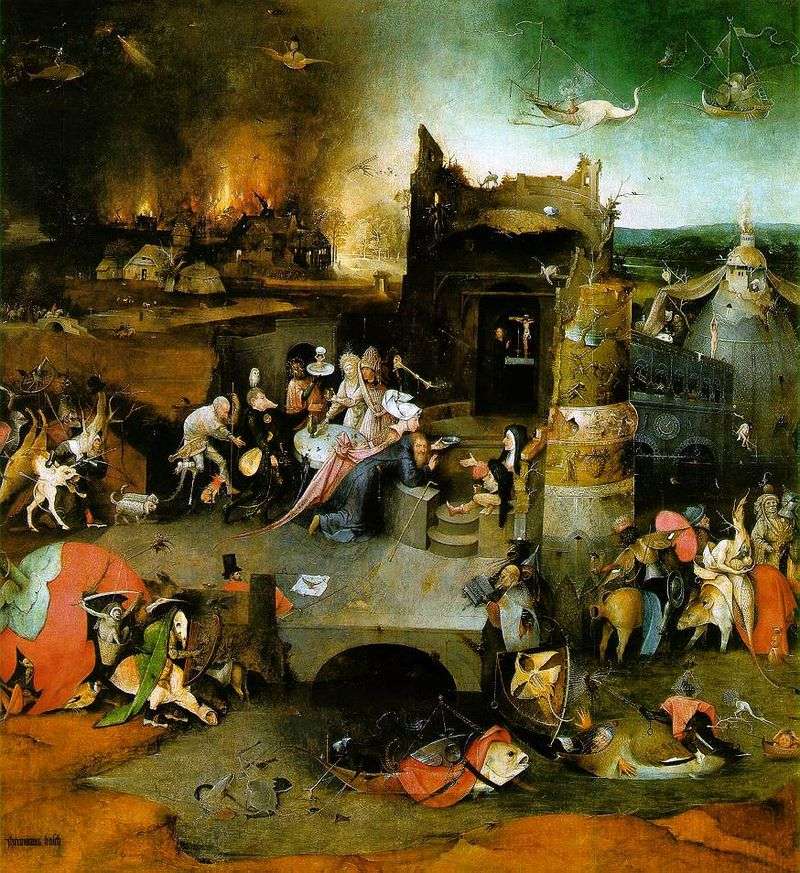 The altar of St. Anthony. The central part of the triptych is Hieronymus Bosch
The altar of St. Anthony. The central part of the triptych is Hieronymus Bosch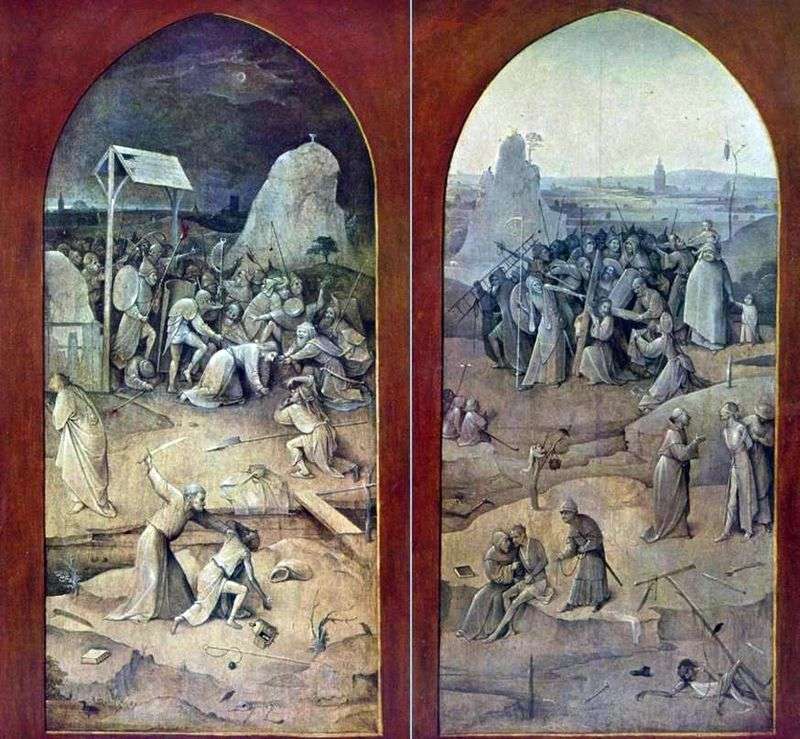 Taking in custody and Carrying the cross. The outer wings of the altar by Hieronymus Bosch
Taking in custody and Carrying the cross. The outer wings of the altar by Hieronymus Bosch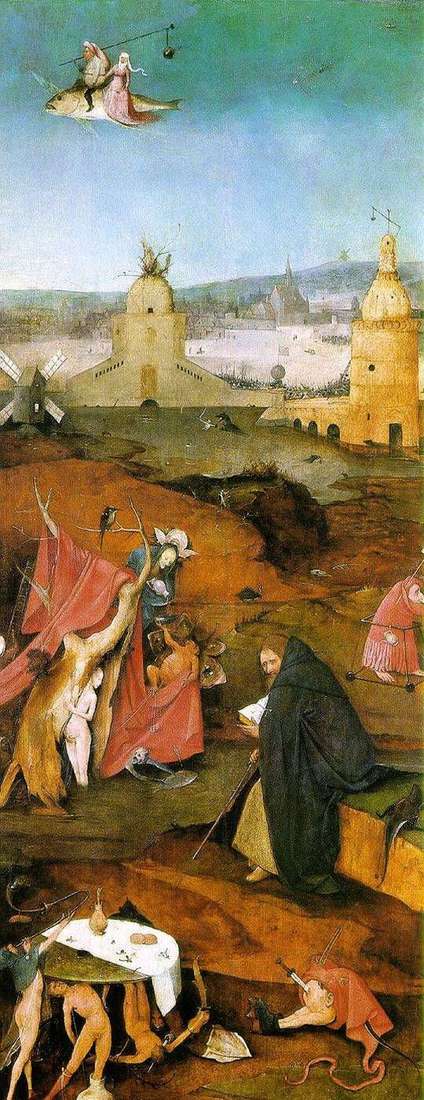 Visions of St. Anthony. The right wing of the altar by Hieronymus Bosch
Visions of St. Anthony. The right wing of the altar by Hieronymus Bosch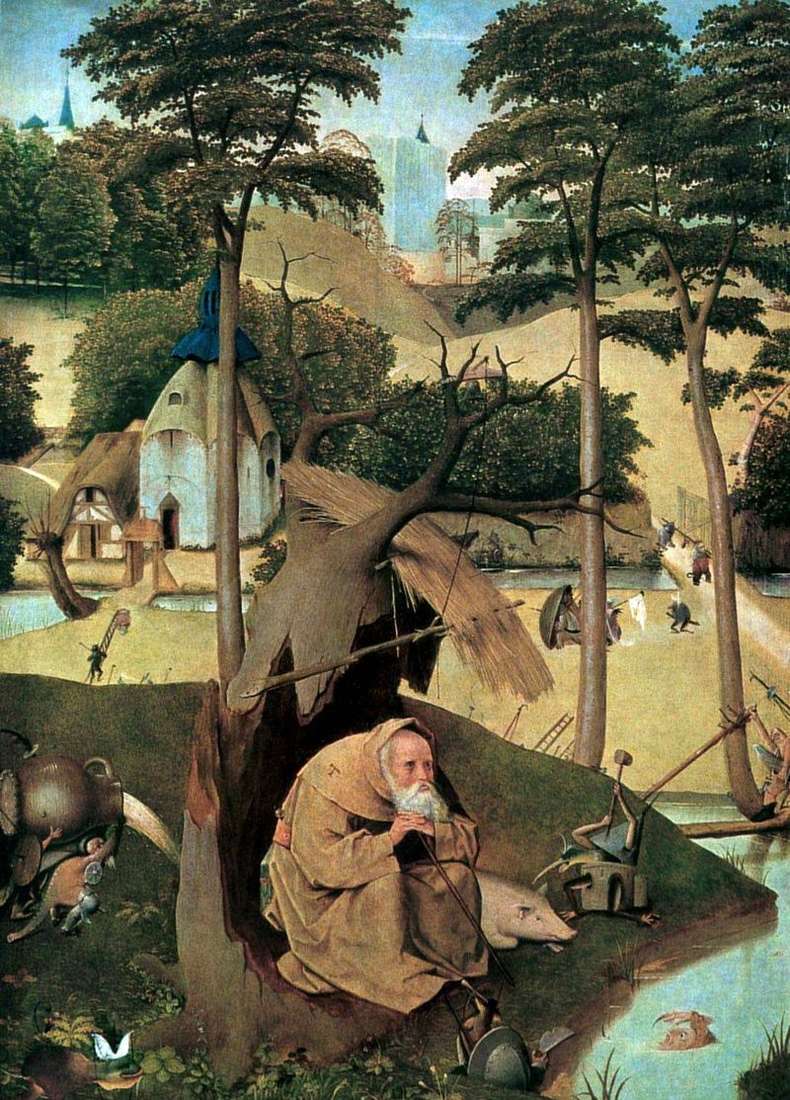 Saint Anthony by Hieronymus Bosch
Saint Anthony by Hieronymus Bosch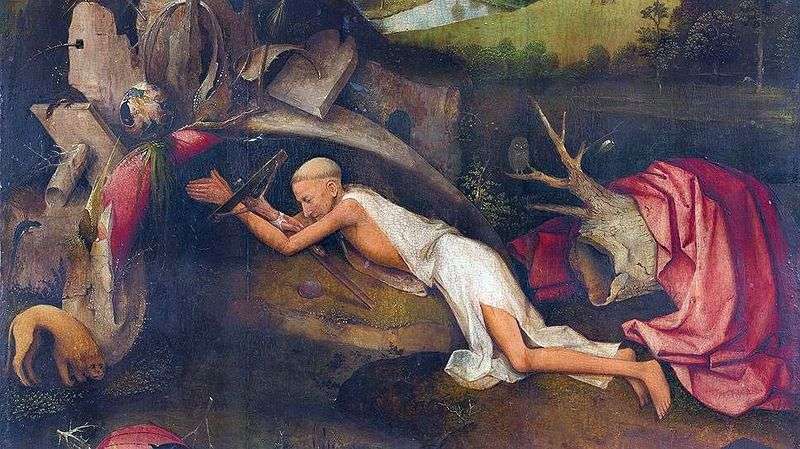 The Prayer of St. Jerome by Hieronymus Bosch
The Prayer of St. Jerome by Hieronymus Bosch Hell, the altar of Voznesen. The right shutter by Hieronymus Bosch
Hell, the altar of Voznesen. The right shutter by Hieronymus Bosch